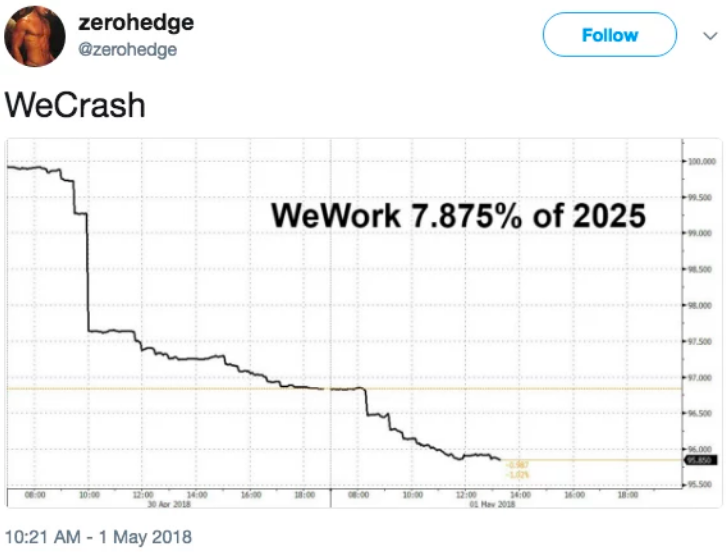Where’s the Auto Distress? (Short PETITION’s Prognistications)
Back in October, we asked “Is Another Wave of Auto-Related Bankruptcy Around the Corner?” The (free) piece is worth revisiting — particularly in light of Tesla’s recent travails. Among many other things, we wrote:
Supply Chain Distress. Last year we saw DACCO Transmission Parts Inc. file for bankruptcy. During the Summer, Takata Inc. filed for bankruptcy (on account of a massive liability, but still) and Jack Cooper Enterprises Inc., a finished-vehicle logistics/transportation provider, reached a consensual agreement with its noteholders that kept the company out of bankruptcy court. For now. Then, a little over a week ago, GST Autoleather Inc. filed for bankruptcy, citing declining auto output. Is this the canary in the coal mine? Hard to say. Literally on the same day that GST filed for bankruptcy - again, citing declining auto output - General Motors, Ford and other OEMs reported the first YOY sales increase (10%), surprising to the upside. It seems, however, that the (sales) uptick may be artificial: in part, it's attributable to (a) Hurricane Harvey damage and mass vehicle replacement; and (b) heavy vehicle discounting. On a less positive note, Ford announced that it will be slashing billions in costs to shore up its financial condition; it also announced back in September that it would slash production at five of its plants. And General Motors Co. announced earlier this week that it would be idling a Detroit factory and cutting production. Production levels, generally, are projected to decline through 2021. Obviously, reduced production levels and idled plants portend poorly for a lot of players in the auto supply chain.
But, with limited exception (like Nissan’s announcement this week that it would cut U.S. production by 20%), the auto world has been largely quiet since then. Another exception: International Automotive Components Group S.A., a Detroit-based interior parts manufacturer with 77 manufacturing plants worldwide, announced, in April, a new financing transaction through the issuance of $215 million of ‘23 second lien notes funded by Gamut Capital Management LP. Perhaps we just need to be more patient?
Rumblings abound around two more names that may be in more near-term trouble. First, American Tire Distributors’ suffered downgrades on the heels of the announcement that Goodyear Tire & Rubber Co. ($GT) opted to discontinue use of ATD as a distributor. Notably, GT’s stock, itself, is down 20% in the last year:
Anyway, back to ATD. Per Crain’s Cleveland Business,
The news cratered the market value of ATD's $975 million of bonds and its $700 million term loan. S&P Global Ratings quickly cut the company's credit grade deeper into junk and Moody's followed suit, saying its capital structure was no longer sustainable.
Then, on May 9, the 800-pound gorilla entered the industry, as Amazon.com Inc. teamed up with Sears Holdings Corp. to allow customers to buy replacement tires online and have them installed at the troubled department store.
The moves signal radical changes in the replacement-tire market. Manufacturers are taking control of their own distribution, cutting out wholesalers like ATD, and along with retailers are developing their own internet capabilities to reach consumers directly, according to New York-based research firm CreditSights.
Ah, there it is: Amazon ($AMZN). Is a PETITION entry complete without the mandatory Amazon reference? Indeed, Moody’s noted,
“All else being equal, the magnitude of the associated earnings and cash flow decline will compound an already levered financial risk profile, rendering a pre-emptive debt restructuring increasingly likely, in our estimation.”
The Huntersville North Carolina company is a wholesale distributor of tires, custom wheels and other related auto equipment; it is a behemoth with $5.3 billion in revenues in 2017 and 140 distribution centers located across the U.S. and Canada. It also happens to have $1.8 billion of debt. The company is equally owned by private equity firms Ares Management LP and TPG Capital.
The debt — coupled with the loss of a major customer — is a big concern. More from Crain’s,
But ATD's capital structure is stretched tight, said Lawrence Orlowski, a director in corporate ratings at S&P. While the company has access to $465.4 million in asset-based lending facilities and $22.7 million in cash as of the end of 2017, even that liquidity may not be enough to stay solvent if ATD permanently loses Goodyear's business or if any other major tire makers pressure the company for concessions, according to Orlowski.
Something tells us (restructuring) advisors may be circling around trying to determine whether it can get together a group of the company’s term lenders.
*****
Second, Tweddle Group Inc., a The Gores Group-owned manufacturer of automotive owners’ manuals (that nobody ever reads) likewise suffered a disastrous blow when Fiat Chrysler Automobiles N.V. announced back in April that it was no longer using Tweddle’s services. Fiat reportedly accounted for 40% of Tweddle’s 2017 revenue and will be hard to replace. Consequently, Moody’s issued downgrades noting,
“The downgrades reflect a credit profile that is expected to be significantly weakened following Tweddle's loss of certain work from a key customer, and the resultant mismatch between the company's earnings and cash flow prospects and its now much more levered balance sheet.”
This reportedly put pressure on the company’s $225mm ‘22 first lien term loan and now the company reportedly has hired Weil Gotshal & Manges LLP for assistance. While it will likely take some time for the loss or revenue to trip any leverage ratios in the company’s credit agreement, this is a name to watch.
*****
Finally, Bloomberg New Energy Finance recently released its “Electric Vehicle Outlook 2018” report. Therein in noted that there are a variety of factors driving EV sales forward:
Lithium-ion battery prices have tumbled, dropping 79% in seven years. Meanwhile, the batteries’ energy density has improved roughly 5-7% per year.
Chinese and European policies are pushing fleet electrification.
Automakers are aggressively pushing the electrification of their fleets. Choice bit: “The number of EV models available is set to jump from 155 at the end of 2017 to 289 by 2022.”
Bloomberg notes:
Our latest forecast shows sales of electric vehicles (EVs) increasing from a record 1.1 million worldwide in 2017, to 11 million in 2025 and then surging to 30 million in 2030 as they become cheaper to make than internal combustion engine (ICE) cars.
Marinate on that for a second. That is a massive 10x increase in the next 7 years followed by an additional 3x increase in the following 5 years.
Bloomberg continues,
By 2040, 55% of all new car sales and 33% of the global fleet will be electric.
But what about President Trump (#MAGA!) and efforts to limit future alternatives subsidies?
The upfront cost of EVs will become competitive on an unsubsidized basis starting in 2024. By 2029, most segments reach parity as battery prices continue to fall.
So, sure. Distressed activity thus far in 2018 has been light in the automotive space. But dark clouds are forming. Act accordingly.



















